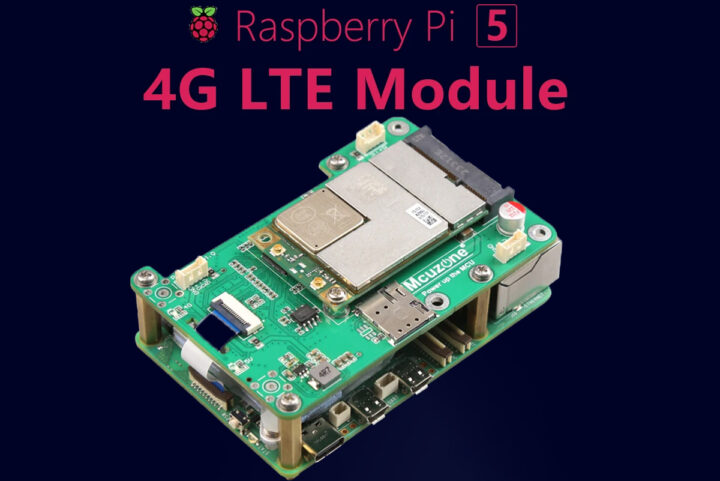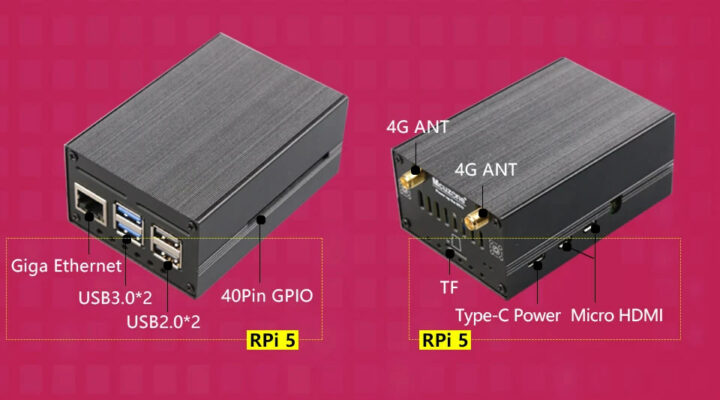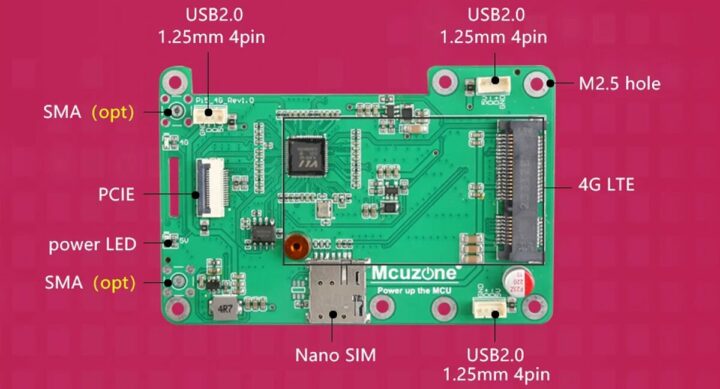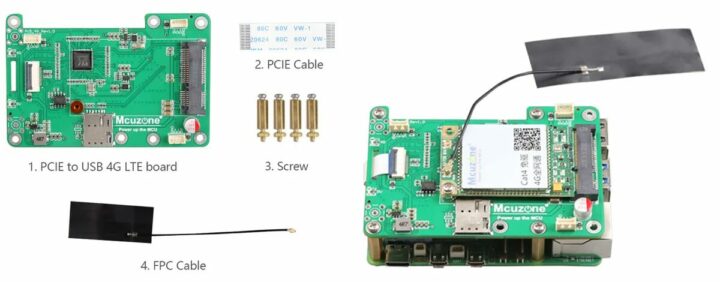Mcuzone recently announced the MP4GM, a new 4G LTE module for the Raspberry Pi 5 SBC. This module connects to the Raspberry Pi 5 via PCIe and includes three extra 1.25mm JST connectors for three additional USB 2.0 interfaces. This HAT is compatible with various 4G LTE mini PCIe modules from Mcuzone and Fibocom, providing flexible options for 4G connectivity.
We have previously covered a 5G Modem Kit for the Raspberry Pi 5, but this is the first time we have found out about a 4G LTE kit designed for the Pi 5. We have also covered Mcuzone RK3308 SoM and the MDK3308-EK Evaluation Kit, designed for smart voice applications as well as a Raspberry Pi CM4 board with dual Ethernet capabilities all from MCUzone. So, feel free to check those out if you are interested in their products.

Mcuzone MP4GM 4G LTE module specification:
- Model – MP4GM PCIe to USB 4G LTE mini PCIE for Raspberry Pi 5
- Antenna – 2 x SMA connectors
- Communication interfaces – PCIe
- USB – 3x USB 2.0 interfaces, each with a 1.25mm 4-pin connector.
- Supported 4G Modules
- HUAWEI ME909S
- NL668-EU 4G LTE
- NL-668-EAU 4G LTE
- NL668-AM 4G LTE
- EG25 4G LTE
- Other Features:
- Power LED Indicator
- Nano SIM slot for cellular connectivity
- Support for PPP Dialing
At the time of writing, there were limited details about the module. However, by examining the parts detail image closely, it’s clear that the module includes an mPCIe socket for the 4G LTE module. There are also options to connect external antennas, a PCIe flex cable connector, a SIM card holder, and power LEDs.
In the package, the antenna connector on the PCB is marked as optional because it includes a sticker antenna. Additionally, the box contains PCB standoffs, a PCIe cable, and the module itself. Photos also show a metal enclosure for the full kit, but it’s not offered for sale at this time.
The company has stated that both the CAT4 4G module and the Qualcomm 4G Module will work without a driver. However, for the Huawei ME909S module, a script is required to configure the PPP dial-up network as explained in the Aliexpress page.
You can purchase the Mcuzone MP4GM 4G LTE module on AliExpress for $57.99, with shipping.

Debashis Das is a technical content writer and embedded engineer with over five years of experience in the industry. With expertise in Embedded C, PCB Design, and SEO optimization, he effectively blends difficult technical topics with clear communication
Support CNX Software! Donate via cryptocurrencies, become a Patron on Patreon, or purchase goods on Amazon or Aliexpress






